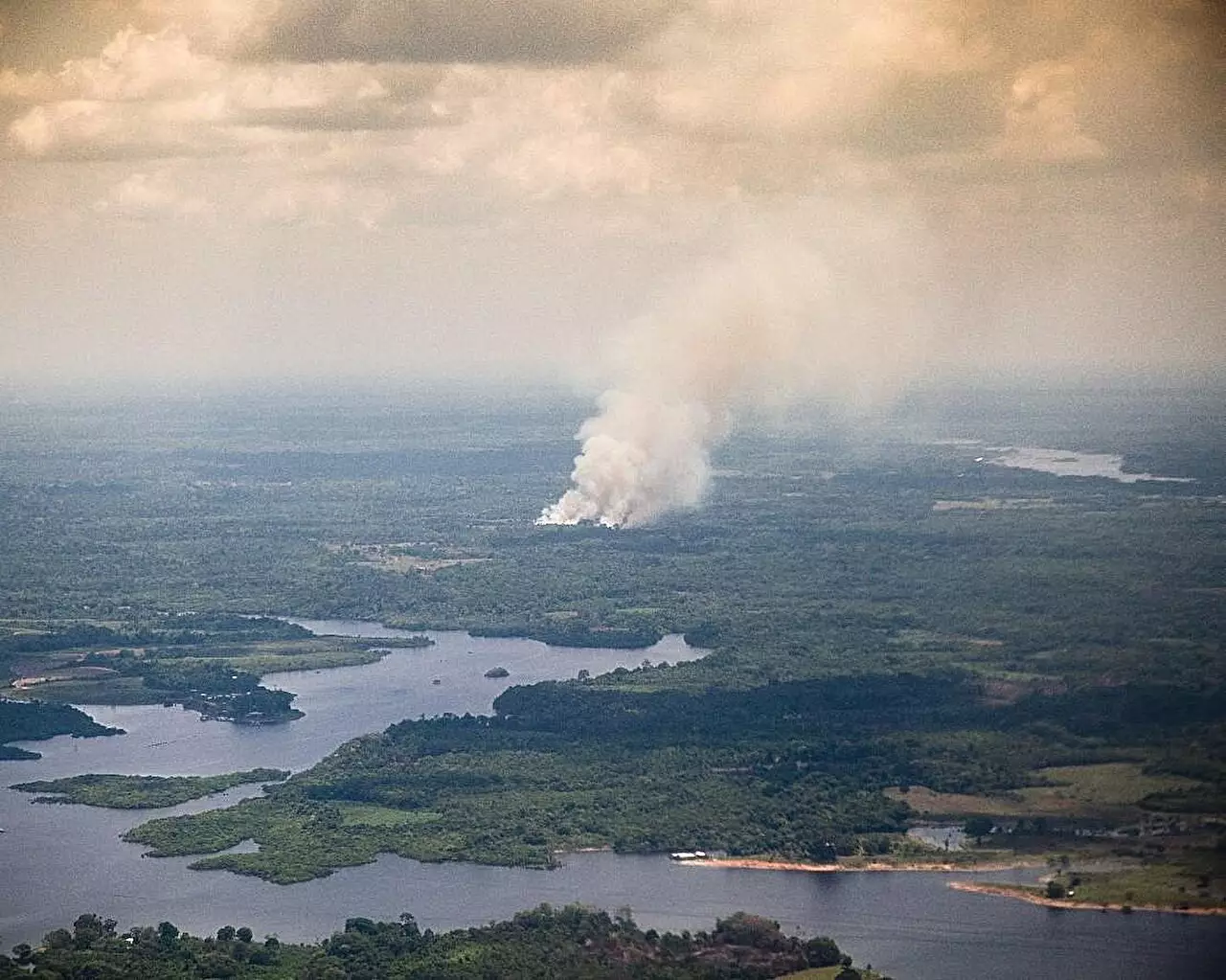Wildfires, particularly in regions rich in natural vegetation like the Amazon, produce not only large plumes of smoke but also a wide array of particulate matter that significantly alters air quality and poses serious health risks to humans and wildlife alike. Among the complex mix of particles, ultrafine particles (UFPs) have emerged as a critical component in the understanding of how wildfire smoke affects both local and global weather patterns. This article delves into recent findings that illustrate how UFPs from vegetation fires can influence storm development and precipitation, reshaping our understanding of air quality and climate dynamics related to biomass burning.
Traditionally, researchers focused on the larger particles emitted by wildfires, assuming that UFPs were quickly removed from the atmosphere due to a process known as scavenging, in which larger particles absorb or collect smaller ones. However, contemporary research has begun to challenge this limited view. Through advanced modeling techniques and data obtained from aircraft measurements over the Amazon rainforest, scientists uncovered a prevalence of UFPs in the smoke, suggesting that their formation and persistence were not only possible but favored under certain conditions.
The research demonstrated that mechanisms responsible for the nucleation and growth of UFPs in wildfire smoke are more efficient than previously assumed. Even amid significant losses of nucleating species to larger particles, certain chemical reactions—including the oxidation of atmospheric constituents—can sustain the formation of these ultrafine particles. The groundbreaking findings not only provide clarity to a major research gap but also emphasize the need for a reevaluation of how wildfire smoke is modeled within atmospheric chemistry frameworks.
UFPs and Their Impact on Weather Systems
The implications of UFPs extend beyond merely their existence within smoke; they play a pivotal role in weather patterns. High-resolution simulations using sophisticated cloud microphysics models have illustrated a more complex interaction between UFPs and cloud formations. These studies indicate that UFPs can enhance cloud development, particularly storm clouds, leading to more intense rainfall and potentially altering rainfall distribution patterns. Meanwhile, the larger particulate matter might inhibit precipitation, indicating a nuanced interplay between particle sizes that warrants further investigation.
By focusing on the particle-size distributions and hygroscopic characteristics of aerosols produced during biomass burning, researchers were able to demonstrate how UFPs not only help in storm intensification but also affect the microphysical properties of clouds. Increased concentrations of UFPs correlate with heavier rainfalls, suggesting that as wildfires become more frequent and intense due to climate change, the resulting emissions could exacerbate weather extremes, contributing to a feedback loop that further complicates climate predictions.
Despite the newfound understanding of the role of UFPs in atmospheric processes, many Earth system models continue to overlook these important particles. As the research indicates, accounting for emissions such as dimethyl amines (DMA) and the production rates of sulfuric acid and low-volatility organic compounds is critical to accurately simulate wildfire smoke effects on weather and climate. As these models currently lack such intricate details, they may underestimate the potential impact of UFPs on cloud dynamics, storm activity, and precipitation, leading to significant gaps in our climate change projections.
The discovery that UFPs can exist in significant quantities within wildfire smoke opens up new avenues of research aimed at understanding not just local air quality but the larger climatic effects of biomass burning events. As wildfires continue to pose threats to both ecosystems and human health, integrating this new knowledge into predictive models will be crucial in devising strategies for mitigation and adaptation.
The emerging research on ultrafine particles from wildfire smoke marks a pivotal shift in our understanding of atmospheric chemistry and climate interactions. By integrating these findings into future studies and models, we can better grasp the multifaceted impacts of wildfires and work towards informed policies that can address the environmental challenges posed by increased fire frequency and severity.


Leave a Reply